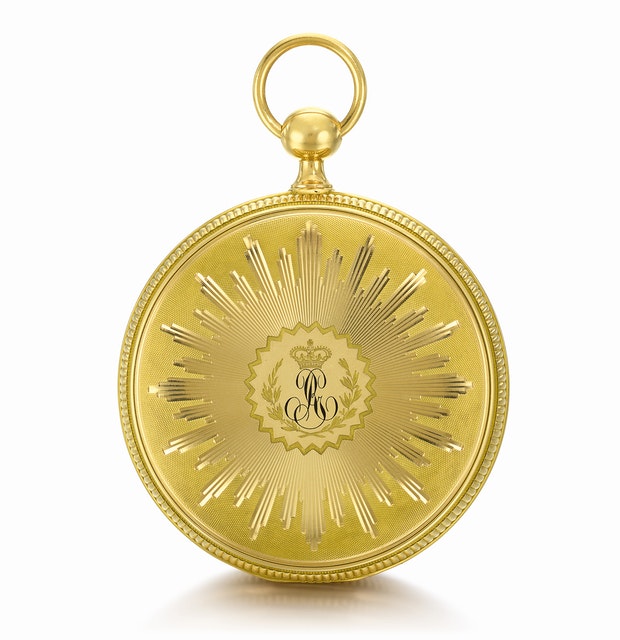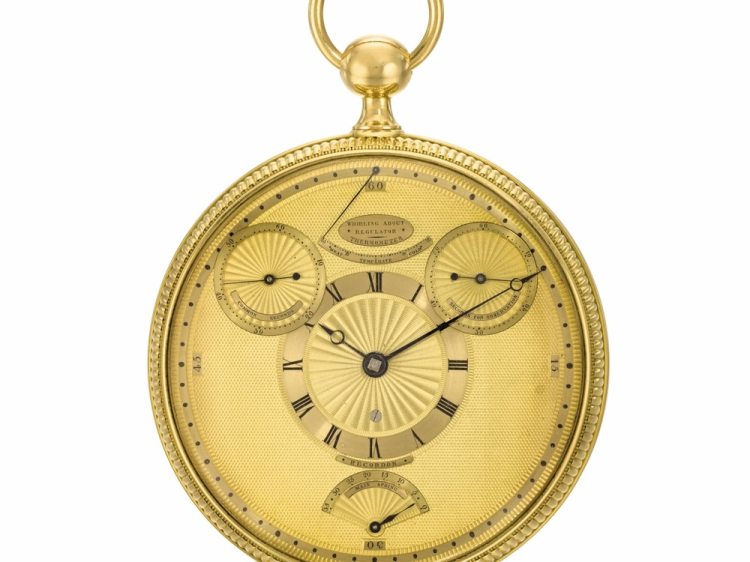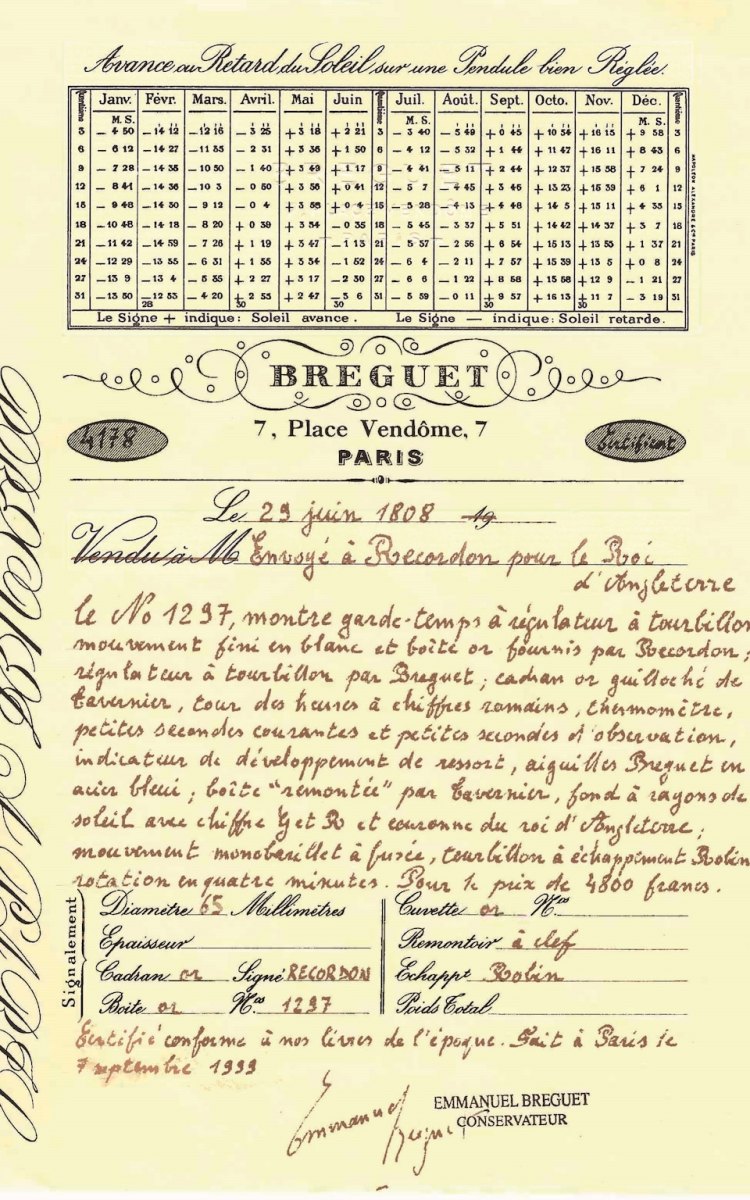King George III is one of the most unfortunate monarchs and forever tarnished with his tag of Mad King George due to the mental illness which he suffered from. What is less known about him is that before he was cursed by his terrible condition, as a young man George was a committed patron of both the arts and sciences.
As well as signing the charter that established the Royal Academy of Arts in 1768, George had a passion for agriculture and was the first British royal to receive a formal education in science. Introduced to ‘natural philosophy’, which included the study of mechanics, optics, mathematics and astronomy, by his tutor John Stuart, 3rd Earl of Bute, George was very much a product of the Age of Enlightenment.

Now his rare and incredibly revolutionary watch is coming up for auction at Sotheby’s on the 14th of July and it is expected to fetch up to £1 million at auction.
The gold Tourbillon watch represented cutting-edge technology in the early 19th century and featured a mechanism that increased long term accuracy by correcting for gravity and positional error. It was the product of French watchmaking “genius” Abraham-Louis Breguet. Breguet was the celebrity watchmaker of his era and his creations were sought after by all the crowned heads of Europe, from Marie Antoinette and the King of Spain to Napoleon and Tsar Alexander I.
Archives show that the piece was sent to Recordon – a watchmaker and Breguet’s agent in London – for the King of England on 29 June 1808 and notes the price at 4,800 francs. Hence, the watch was made and delivered during the Napoleonic wars (1803-1815) when the French and their allies were forbidden from trading with the UK. So for George III to have sought out the watch, and for Breguet to have agreed to supply it, was almost unthinkable.
Unsurprisingly, direct links between maker and client were blurred, but there was still a huge risk for both parties and, although today the watch is instantly recognisable as a Breguet, attempts were made to ‘disguise’ it.

It is the only known four-minute tourbillon from its series to be labelled in English, leading to the words “Whirling About Regulator” appearing on the dial – a literal translation of “Régulateur à Tourbillon”. Unusually for the time, Breguet’s name is only recorded once on the tourbillon carriage. The dial and movement are signed by Recordon and the inner caseback bears English hallmarks, as well as the name of London-based case-maker, Louis Comtesse. Any cursory inspection of the watch would likely have identified it as English.
Once the watch was safely delivered to its new owner, records show that while George loved to own the latest and most cutting-edge instruments and objects, he wasn’t quite so up-to-the-minute in making payment. This led to some interesting correspondence between Breguet’s representatives and the royal household.
In 1811, after recurring bouts of illness, George was no longer able to retain the crown and his son became Prince Regent. The Georgian Papers (the Royal Archives relating to the Georgian period) contain documents from 1812 including a letter from Breguet’s agent Moreau listing three watches and a clock with outstanding payments.

An instalment for No. 1297 is included in the debt of £700, Moreau writing: “I hope Sir considering the time elapsed, and when you reflect that my departure from this country cannot possibly take place unless this affair is settled, all these reasons… will induce you to procure me the settlement of my account.” Full payment was made in 1813 and of course Napoleon was only finally defeated at Waterloo in 1815.
Oh golly, thats intresting. And what a beautiful watch! I do so love watches and clocks. I think I drove my sister in law crazy whilst there in 2000. If there was a church tower I had to go see the clock. all over the UK, so many towers, so many clocks.
LikeLiked by 1 person
I love watches too and church towers. There is a church on my Charles Dickens walk where the tower was visible to 4 ‘villages’ but the people of one village refused to pay towards the clock and bells and so their side didn’t receive a clock and it is still that way centuries later!
LikeLike
Oh wow, so theres a clock on 3 sides?
LikeLike